NASA’s Cassini Spacecraft Shows Earth And Its Moon From Between Saturn’s Rings


NASA’s Cassini spacecraft shows Earth and its moon from between Saturn’s rings
NASA’s Cassini spacecraft, which orbits Saturn, took a picture of Earth from between Saturn’s rings — with Earth’s moon at its side.
Captured at 1:41 a.m. Eastern on April 12, 2017, the spacecraft was 870 million miles away from its home planet when it took the image.
Earth is seen as a tiny bright speck in the center of the picture. Upon cropping and zooming in, its moon can be seen to the left as an even smaller dot. The photograph, captured by the Imaging Science Subsystem, doesn’t clearly show which part of Earth is facing the ringed planet at the time the picture was taken, but NASA has revealed it is the southern Atlantic Ocean. Read more (4/21/17)
follow @the-future-now
More Posts from Astrotidbits-blog and Others


On April 21, 2014, the Hubble telescope captured what looks like a black hole in Jupiter’s Great Red Spot — but really, it’s the shadow of the Jovian moon Ganymede. (Source)



“JUNO PROBE MAKES HISTORY BY ENTERING JUPITER’S ORBIT AFTER FIVE-YEAR JOURNEY”
Last night, NASA and its Juno probe made history by entering a new probe in orbit around Jupiter. The Juno spacecraft, which had left Earth five years ago, finally entered Jovian orbit after a 35 minute rocket engine manoeuvre to slow down its approach to the planet and get caught by its gravity. Unlike other engine firings in the past, Juno’s manoeuvre was especially dangerous since no previous spacecraft had ever dared to pass so close to Jupiter; its intense radiation belts can destroy unprotected electronics. Luckily, since the probe was built like a tank with titanium shielding, a few minutes later, a sequence of tones transmitted from the spacecraft confirmed the braking manoeuvre had been a smashing success prompting wild cheering at NASA’s mission control in Pasadena, California. “All stations on Juno co-ord, we have the tone for burn cut-off on Delta B,” Juno Mission Control had announced. “Roger Juno, welcome to Jupiter.” Juno’s main objective is to sense Jupiter’s structure and chemistry to gather clues on how the gas giant formed some four-and-a-half-billion years ago. However, much of this observation will not take place until mid-October when Juno performs a second rocket engine burn to tighten its orbit to just 14 days. By then, Juno will be able to answer some interesting questions about the planet including where it formed in the early Solar System and whether Jupiter has a solid core or a core made of compressed gas. After the mission ends, Juno is scheduled to dive into Jupiter’s atmosphere in February 2018 to ensure that there is no possibility of it crashing into and contaminating any of Jupiter’s large moons.
Read more about this fascinating story on: http://www.bbc.com/news/science-environment-36710768
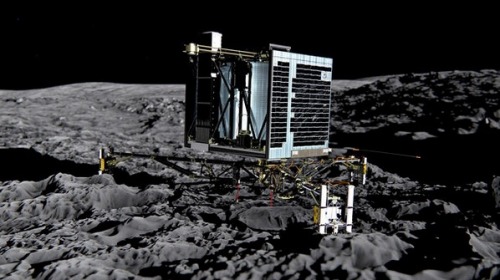

Comet lander Philae wakes up: How it happened and what’s next
By Lauren Raab
Philae, the first spacecraft to land on a comet, surprised and delighted scientists this weekend by waking up and reestablishing contact with Earth, seven months after running out of power. It “spoke” for more than a minute, according to the European Space Agency, and it’s expected to be able to continue gathering information and sending it home.
Here’s a look at what the lander has done so far and what will happen next.
Continue Reading.
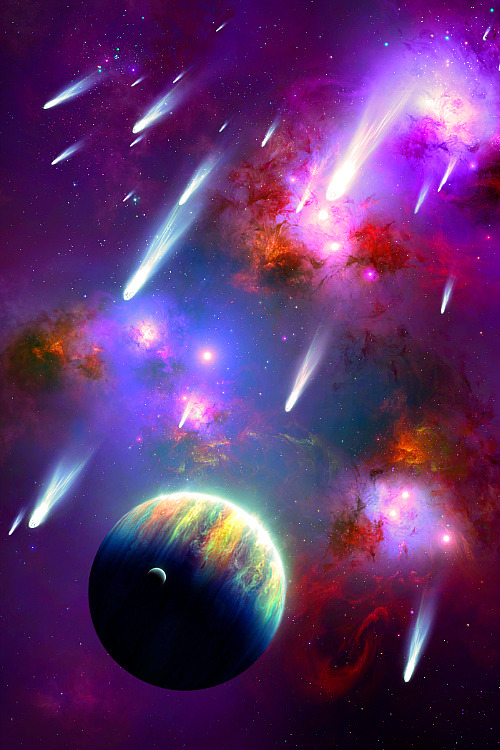
Drifting Memories
Space shuttle launch (no sound).





For more on the Fermi Paradox and why alien life hasn’t found us yet. (Infographic via futurism)
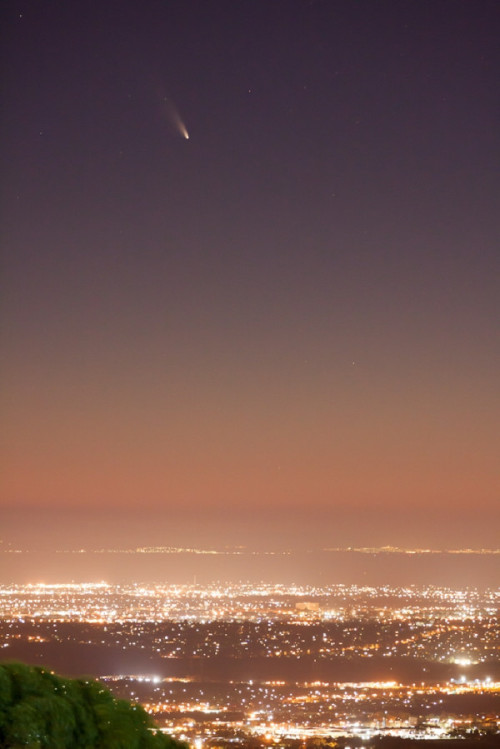
Comet PanSTARRS
Gorgeous picture of Comet PanSTARRS taken by Carl Gruber on March 2, 2013 at a mountain lookout in Melbourne.
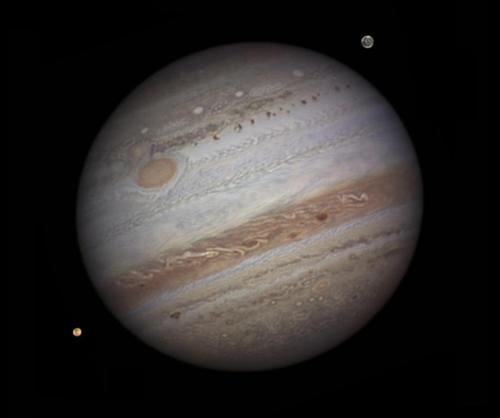

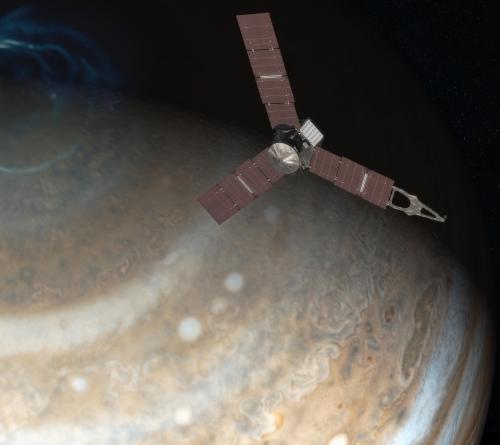
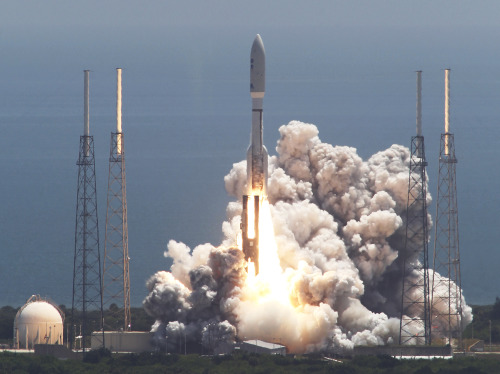
Juno reaches Jupiter
Braving intense radiation, a NASA spacecraft reached Jupiter on Monday after a five-year voyage to begin exploring the king of the planets.
Ground controllers at the NASA Jet Propulsion Laboratory and Lockheed Martin erupted in applause when the solar-powered Juno spacecraft beamed home news that it was circling Jupiter’s poles.
The arrival at Jupiter was dramatic. As Juno approached its target, it fired its rocket engine to slow itself down and gently slipped into orbit. Because of the communication time lag between Jupiter and Earth, Juno was on autopilot when it executed the tricky move.
“Juno, welcome to Jupiter,” said mission control commentator Jennifer Delavan of Lockheed Martin, which built Juno.
In the coming days, Juno will turn its instruments back on, but the real work won’t begin until late August when the spacecraft swings in closer. Plans called for Juno to swoop within 3,000 miles (5,000 kilometers) of Jupiter’s clouds – closer than previous missions – to map the planet’s gravity and magnetic fields in order to learn about the interior makeup. (AP)
Photos: (from top) NASA/Damian Peach, AP Photo/Ringo H.W. Chiu, NASA/JPL-Caltech, AP Photo/Terry Renna)
See more images of Juno reaches Jupiter on Yahoo News
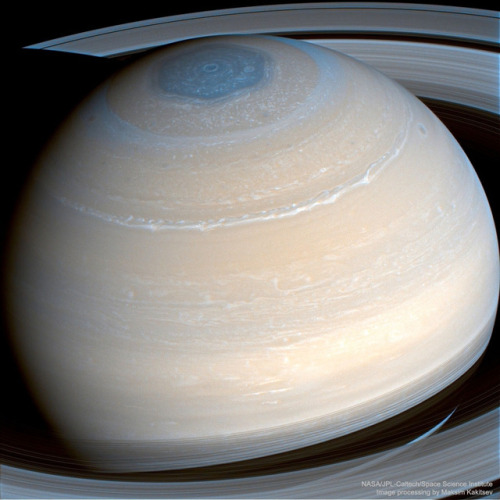
*Those razor-like shadows, they’re so black they look photoshopped
-
 maturegentleman75 liked this · 6 years ago
maturegentleman75 liked this · 6 years ago -
 genocider-syo-is-still-my-queen liked this · 6 years ago
genocider-syo-is-still-my-queen liked this · 6 years ago -
 yxcvbnm666 liked this · 6 years ago
yxcvbnm666 liked this · 6 years ago -
 hellanathalie liked this · 6 years ago
hellanathalie liked this · 6 years ago -
 losto-vae-mellon-nin reblogged this · 6 years ago
losto-vae-mellon-nin reblogged this · 6 years ago -
 losto-vae-mellon-nin liked this · 6 years ago
losto-vae-mellon-nin liked this · 6 years ago -
 iiithisismyusernameiii liked this · 6 years ago
iiithisismyusernameiii liked this · 6 years ago -
 lizbug3710 liked this · 6 years ago
lizbug3710 liked this · 6 years ago -
 noctambulodelarte liked this · 6 years ago
noctambulodelarte liked this · 6 years ago -
 felixthethief liked this · 6 years ago
felixthethief liked this · 6 years ago -
 byron4night liked this · 6 years ago
byron4night liked this · 6 years ago -
 cloudair liked this · 7 years ago
cloudair liked this · 7 years ago -
 outragedbird reblogged this · 7 years ago
outragedbird reblogged this · 7 years ago -
 i-am-fandoms-and-satan liked this · 7 years ago
i-am-fandoms-and-satan liked this · 7 years ago -
 waffle--kun-blog liked this · 7 years ago
waffle--kun-blog liked this · 7 years ago -
 20thcen reblogged this · 7 years ago
20thcen reblogged this · 7 years ago -
 notreallygrownup reblogged this · 8 years ago
notreallygrownup reblogged this · 8 years ago -
 phobphil reblogged this · 8 years ago
phobphil reblogged this · 8 years ago -
 resident-tomb-rat liked this · 8 years ago
resident-tomb-rat liked this · 8 years ago -
 badsquid liked this · 8 years ago
badsquid liked this · 8 years ago -
 anaadelainnerstar reblogged this · 8 years ago
anaadelainnerstar reblogged this · 8 years ago -
 anaadelainnerstar liked this · 8 years ago
anaadelainnerstar liked this · 8 years ago -
 bwoche reblogged this · 8 years ago
bwoche reblogged this · 8 years ago -
 jms-star reblogged this · 8 years ago
jms-star reblogged this · 8 years ago -
 jms-star liked this · 8 years ago
jms-star liked this · 8 years ago -
 plxtou reblogged this · 8 years ago
plxtou reblogged this · 8 years ago -
 weird-wayne-yankovich liked this · 8 years ago
weird-wayne-yankovich liked this · 8 years ago -
 sparklingpies liked this · 8 years ago
sparklingpies liked this · 8 years ago -
 honeydreww liked this · 8 years ago
honeydreww liked this · 8 years ago -
 merobees liked this · 8 years ago
merobees liked this · 8 years ago -
 astraldemise reblogged this · 8 years ago
astraldemise reblogged this · 8 years ago -
 princedeceit liked this · 8 years ago
princedeceit liked this · 8 years ago -
 oldfriend21 reblogged this · 8 years ago
oldfriend21 reblogged this · 8 years ago -
 odxfilicx liked this · 8 years ago
odxfilicx liked this · 8 years ago -
 dolley-charlotte reblogged this · 8 years ago
dolley-charlotte reblogged this · 8 years ago -
 roger-bass liked this · 8 years ago
roger-bass liked this · 8 years ago -
 authorkylehartman reblogged this · 8 years ago
authorkylehartman reblogged this · 8 years ago -
 crowsolan liked this · 8 years ago
crowsolan liked this · 8 years ago -
 fishdogfoodshack reblogged this · 8 years ago
fishdogfoodshack reblogged this · 8 years ago -
 curapicas liked this · 8 years ago
curapicas liked this · 8 years ago -
 hornodepan reblogged this · 8 years ago
hornodepan reblogged this · 8 years ago -
 hornodepan liked this · 8 years ago
hornodepan liked this · 8 years ago